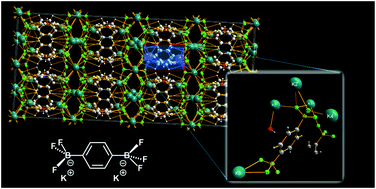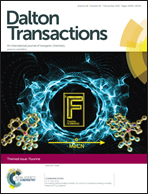Organotrifluoroborates as attractive self-assembling systems: the case of bifunctional dipotassium phenylene-1,4-bis(trifluoroborate)†
Abstract
The first structure of an aromatic bis(trifluoroborate) dipotassium salt, elucidated by the combination of crystallography, DFT calculations, topological and non-covalent interaction analysis, discloses a 3D network undergoing spontaneous self-assembly thanks to the massive participation of weak intra- and intermolecular interactions for which fluorine atoms proved to play a leading role.

- This article is part of the themed collection: Fluorine

 Please wait while we load your content...
Please wait while we load your content...